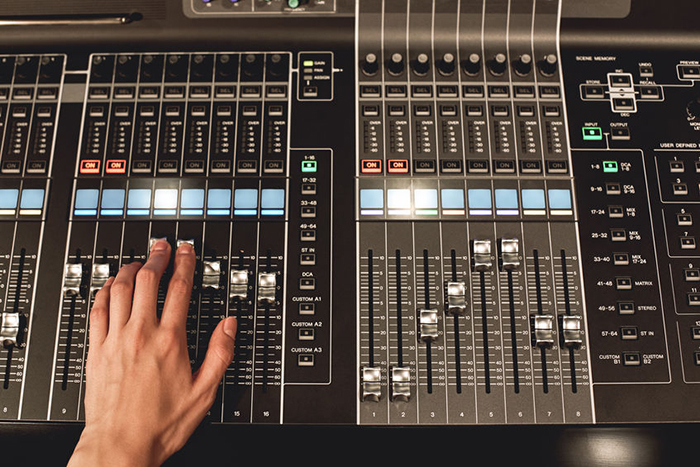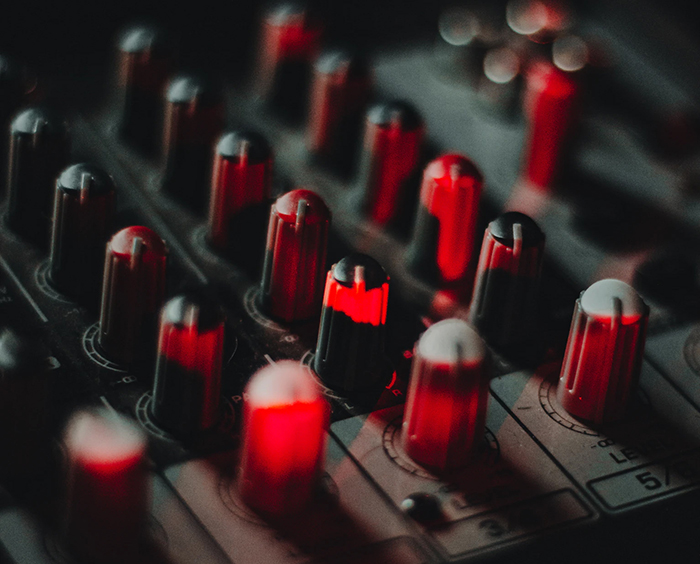
3) Build a solid foundation of lows. With the individual instruments and vocals tailored for maximum clarity and separation, it’s time to build the actual mix from the ground up. After optimizing vocals, I then turn to drums and bass guitar. They serve as the foundation, a solid bedrock upon which to build.
• Do your best to ensure the drum kit is in good shape before twisting knobs in the attempt to fix a “bad source.” Are the heads fairly new? Are the shells consistently round or have they warped over time, making it hard to get the rims to sit evenly? Are the toms tuned to the correct note for their size and shape? This may be totally out of your control, but spending a few minutes checking the sound of the kit before starting can save a lot of time later.
• Start with the kick and listen to it for a few beats in the system. It will probably sound a bit dark and boxy, and require some EQ. A solid place to start is to pull out some 200 to 500 Hz to reduce overtones, then boost a little high end (around 3 to 6 kHz) to accentuate the attack. Then add a small boost in the lows, at the drum’s resonant frequency (usually between 40 and 60 Hz) to give it some thump. If there are two microphones on the kick, listen to them both to see which one offers the best starting point, but avoid combining them for now. (That’s a whole other article…)
• Move on to snare. If there’s a top and bottom mic on it, you’re a step ahead of a “top only” mic setup. Be sure to check polarity on the bottom mic – odds are you’ll need to reverse the polarity because the mics are pointing in opposite directions. Look for a nice resonant frequency that helps the snare “sing,” with some crack and sizzle. Start with the top mic only, then slowly add the bottom one, which will bring in some top end.
• Toms are often tough to get right. As noted, if they’re properly tuned to supply an even “note” at the frequency range they’re supposed to reside, you’re well on your way. I like to start with flat EQ on toms and then check them with a real-time frequency analyzer to confirm the resonant frequency of each. For smaller ones, this may be around 110 to 130 Hz, while larger ones tend to ring out at around 90 to 110 Hz. Floor toms naturally sit best at 60 to 80 Hz. The bottom line: try to confirm each tom’s resonant note and add a small boost at that frequency, cut out low-mid sludge, and then boost a bit of 5 kHz attack. This provides a good starting point.

• With cymbals and overheads, start by listening to what’s coming off the stage – they’re likely too loud already. If not, carefully boost to taste.
• Bass guitar often presents a tough challenge, especially if the room is large and boomy. Hopefully it’s being played by a talented musician with a good-sounding instrument – that’s half the battle. It’s important to work with the player and the musical director to focus on achieving a tone best suited for the music being played. Bass guitars can sound deep with little mids and highs or percussive and bright. A bass that sounds out of context with the rest of the musicality of the band is a distraction and makes the mix engineer’s job tougher.
Whatever the desired tone, it needs to work well with the kick drum. Sometimes the choice needs to be made regarding which instrument – kick or bass – will “own” the lowest frequency spectrum. If there’s excessive overlap at the deepest frequencies that reside mostly in the subwoofers (30 to 80 Hz) the two instruments may fight each other for separation and clarity. A small amount of HPF on one or both of them may open up that frequency area and also help in hearing the bass guitar notes more clearly. It’s different every time, so work with it.
